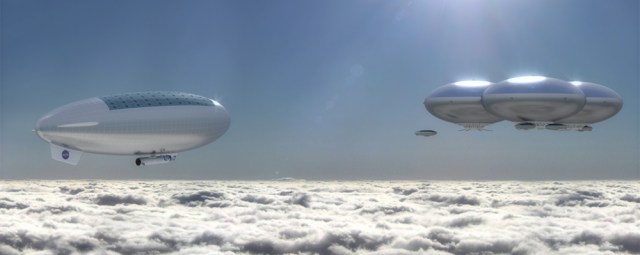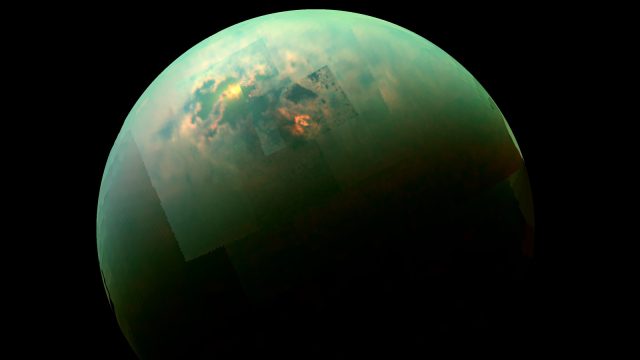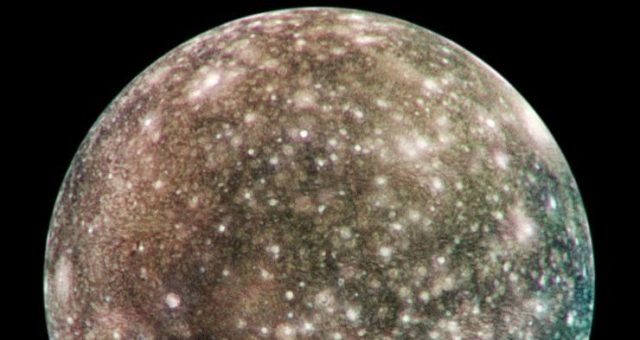
In the year 2016 one might be forgiven for thinking the world is going to hell. Across much of Europe and the United States a distressed and angry working class has begun wielding nationalism as a blunt weapon against the disconnected ruling class. Islamic radicals have stepped up attacks against the West as well as moderate practitioners of their own faith. Then there is humanity's untrammeled use of fossil fuels, worsening water shortages, and other environmental degradations of the planet—not to mention the proliferating threat of nuclear, biological, and chemical weapons. Finally, we also haven't yet gotten around to tracking every asteroid that might wipe out humankind.
In short, Earth might need a backup plan.
Elon Musk certainly thinks so, having staked much of his fortune on SpaceX and its relentlessly pursued goal of colonizing Mars. But Mars is not the only place humans could go. There are other worlds in the Solar System where humans could walk without space suits, find ample energy, or even swim in subsurface oceans. None of these places are remotely as habitable as Earth, even at our planet's cold poles. But they also don't have Earth's political baggage, either. So here's our guide to the five-best options for DIY colonists:
Mars
The good: Mars is the obvious choice. It is close enough for humans to travel to with existing propulsion technologies within about six to nine months. The planet also has soil, surface ice at the poles, and liquid water below ground at lower latitudes. There is enough sunshine to provide solar power. The thin Martian atmosphere provides a modicum of protection from cosmic and solar radiation. All of the above factors suggest that humans could build a somewhat sustainable colony over time on Mars, although it would largely be an indoors existence.
The bad: There is so little atmosphere that it might as well not exist. About 19km above the Earth, pilots reach the Armstrong limit, where water boils at the temperature of the human body, and the atmosphere is about 6 percent that of Earth's surface. The Martian atmosphere is about one-tenth the value of the Armstrong limit. An exposed human on the surface would die within a few dozen seconds. The recent discovery that solar wind has stripped the Martian atmosphere away over billions of years has also dealt a blow to hopes that the world might be terraformed by releasing carbon dioxide trapped in Martian rocks.
The Moon

The good: Proximity. Humans can get to the Moon within a few days, making travel and resupply by far the easiest of any off-world location. Scientists also believe that ample amounts of water ice exist at the lunar poles, providing a hefty source of drinking water, radiation shielding, and rocket propellant. The moon's surface contains valuable minerals, such as silicon, which could be used to make solar cells, and Helium-3, which might be a good source of energy. It is also plausible that large lava tubes exist just beneath the Moon's surface, which could be large enough for human cities.
The bad: The Moon has no atmosphere, of course, making surface activities hazardous and leaving astronauts vulnerable to radiation. The Apollo astronauts, too, found the Moon's dusty surface was difficult to contend with when they brought the dust back into their spacecraft. Finally, if Earth well and truly does go to rot, would the Moon perhaps be just a little too close?
Venus

The good: An atmosphere! We're not talking about the surface of the planet, where the crushing atmospheric pressure is equivalent to about 900 meters below the surface of Earth's oceans, and the temperature is a boiling 462 degrees Celsius, on average. We’re talking about 50km above the surface, where the atmospheric pressure is equivalent to that on Earth and temperatures range from 0 degrees to 50 degrees Celsius. Moreover, the remaining Venusian atmosphere provides radiation shielding. A human might sun oneself on an open-air deck wearing only a breathing mask. NASA has already done some preliminary work studying a floating airship concept with its Project HAVOC.
The bad: When it rains, it rains sulfuric acid. This would damage solar panels and the airships themselves, not to mention any humans caught unawares out in it. The other problem is resupply of water or metals. Reaching Venus’s atmosphere would be more difficult than getting to the Moon or even Mars, and launching from the airships would require rockets nearly as powerful as those needed to take off from Earth.
Titan

The good: Energy, and lots of it. The great lakes of Saturn's moon Titan are filled mostly with pure methane, providing a near limitless supply of power for human activities. The surface pressure is about 1.4 times that of Earth, too, which means it is one of the few places in the Solar System where humans wouldn't need a pressure suit (aside from an air mask) to walk outside. The nitrogen, methane, and ammonia in Titan's atmosphere could be used as fertilizer to cultivate crops in greenhouses, and there may also be subsurface water. The thick atmosphere would provide good radiation shielding.
The bad: Temperature and distance. The surface of Titan is about -180 degrees Celsius (so no pressure suit, but LOTS of layers of warm clothing). And since this moon orbits Saturn, it is the farthest of any of these options, requiring the better part of a decade for humans to reach with current propulsion systems.
Callisto

The good: Callisto is not as famous as some of the Jovian moons, such as Europa, but it probably would be the best one to live on. Comparable in size to Mercury, it is the most distant from Jupiter of the planet's four large moons, which means it receives less radiation from the gas giant. Spacecraft have observed bright patches of ice on the moon's rocky surface, and deeper inside the planet there’s probably a salty ocean that is 50 to 200km deep. With its Human Outer Planets Exploration study, NASA has looked at sending humans to Callisto eventually, due to its geological stability and the potential to turn its surface ice into rocket propellants.
The bad: It's not as far as Titan, but Callisto is still several years of travel from Earth. The moon has only a tenuous atmosphere, so it would not be unlike living on the surface of Earth's own Moon. And while the radiation levels are lower than Jupiter's other moons, they are still higher than Titan and some of the other alternatives. Solar panels would be of limited use for colonists as Callisto receives only about 1/25th of the solar energy that Earth's Moon does.
reader comments
196